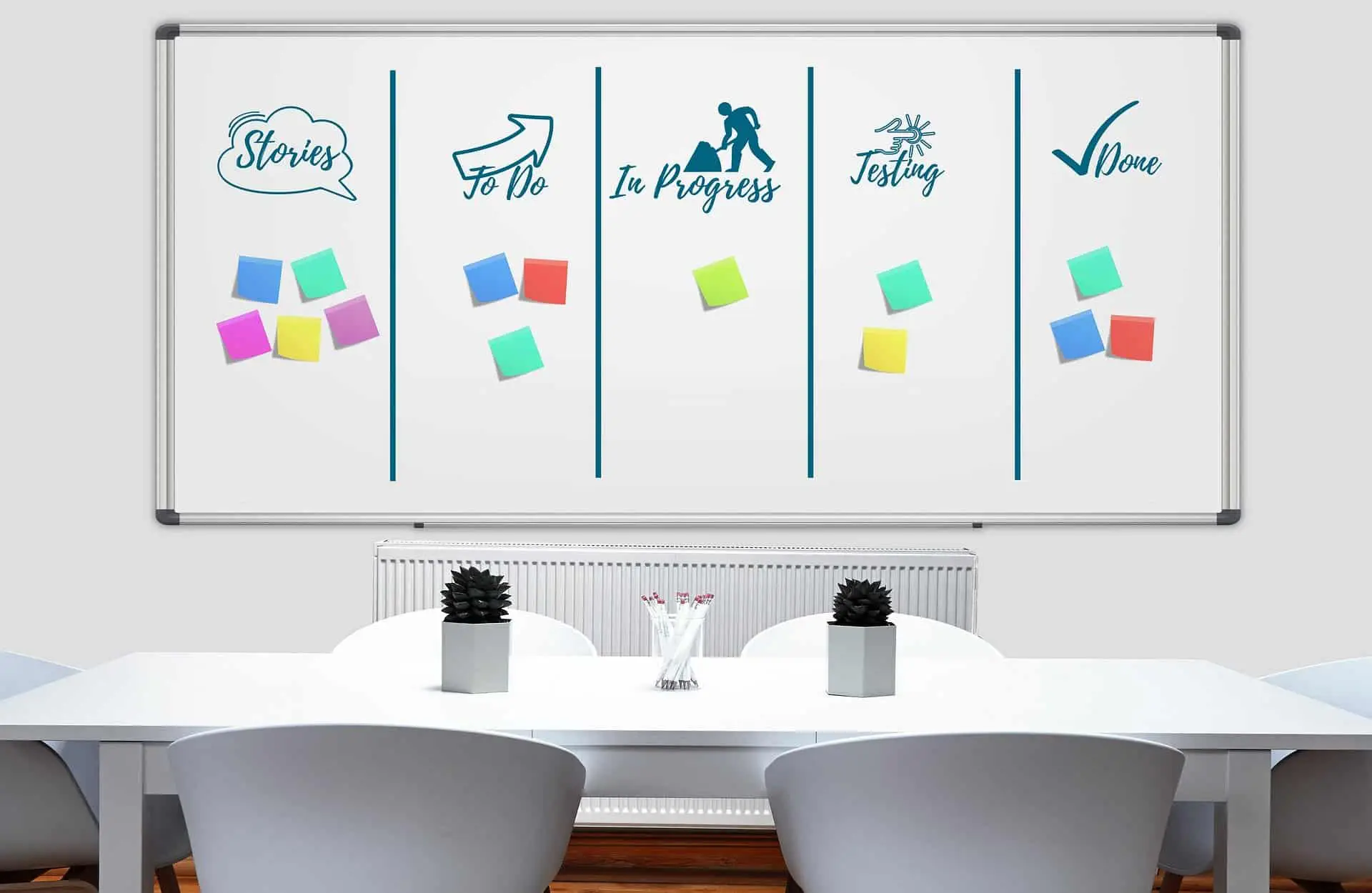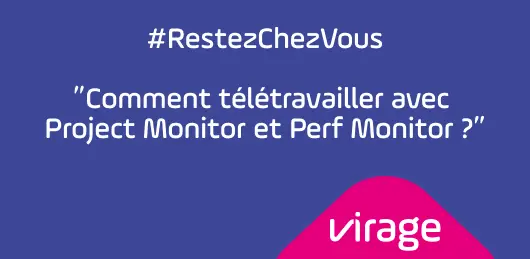Facilitate teleworking and energize your teams with the Daily Meeting!
During this period of COVID19, your teams are at a distance, and you're looking for ways to organize and maintain activity with your employees. You're probably asking yourself these questions:
- How to organize project management around teleworking?
- How do you monitor and lead your teams?
- What are the tools and best practices for better internal communication on project progress?
The Daily Meeting solution? A 15-minute team briefing every morning to discuss current issues!
You'll see in this article:
- Why organize a daily meeting?
- In concrete terms, how does a daily meeting work?
- Tips: better organize your daily meeting to motivate your team
Why organize a Daily Meeting?
The Daily Meeting brings your teams together to review current issues. The aim is to quickly and efficiently review current issues, usually in no more than 15 to 20 minutes. The advantages of the Daily Meeting are both collaborative and motivating:
- They improve employee commitment to the tasks in hand
- It's a great way to keep employees connected during periods of confinement.
- The entire team keeps abreast of individual progress and any difficulties encountered.
- Each team member contributes to the broader goal of service improvement
- Employees feel a sense of belonging to the group, and can share successes as well as problems.
How does a daily meeting work in practice?
Basically, Daily Scrum Meetings are used in the agile method to animate developer sprints. But this methodology is easy to transpose to any department to challenge your teams: Marketing, Sales, Customer Support...
The principle of a daily meeting:
The daily meeting is a short meeting at the start of the day which brings together all the members of a team. It is generally held standing up (a trick to keep it short) in front of a Kanban-type board. In telecommuting mode, screen sharing, microphones and webcams can be used to reproduce a similar set-up. Keeping the format short will be the main challenge.
1 Ritualizing the daily meeting
Your daily meeting should be held every working day, at a fixed time, with all team members as permanent guests. When telecommuting, you can send a recurring event via your shared calendar application. Organize your daily meeting at the start of the day, 15 / 20 minutes after the arrival of your colleagues. This is a good time to allow everyone to take in information quickly beforehand, and to deal with any emergencies via your company's communication channels (e-mail, company social networks, calls, etc.).
2. Set up the kanban animation tool

Kanban is a highly effective visual management tool for daily meetings. You can instantly visualize the progress of each subject and each person's tasks. The kanban board structures work steps. All tasks are represented on a board accessible to all team members.
- This board can be "physical" (paper board, kraft sheet, white-board) with post-it notes.
- Alternatively, it can be dematerialized in a project management application (see below for an example). Project Monitor
There's no need to apply all the Kanban principles to your daily meetings (flow logic, work completed pulls work to be done, etc.). The aim here is to use it as a basis for exchange and a shared vision of what needs to be done during the day.
In general, a kanban is structured in 4 columns, corresponding to task status. A task must "cross" the kanban, moving from column to column according to its progress.
- To be started: the task has not yet been taken on, so placing it in this column requires the definition of a carrier and a vision of what needs to be achieved.
- In progress: The task is in progress with a defined deadline.
- To be validated: The task has been completed, but needs to be confirmed/validated by the team or third parties.
- Finished: We can "flush" the task and remove it from the projects; we won't be coming back to it.
A fifth column can be added to collect ideas or tasks that have been assigned or prioritized:
- Idea: in general, at this stage, the task has not yet been defined as a priority, or the people assigned to it have not yet incorporated it into their agenda.
3. Create your tasks, user stories and activities
Your kanban is designed to provide an overview of all your team's work. Whether this work plan stems from your projects or recurring activities. Here again, you don't need to have listed everything, but you do need to have an exhaustive view of what was done the day before and what needs to be done during the day. The unexpected has its place, but it's important to share it during the daily meeting (and sometimes to retroactively create a task). With telecommuting, it's important to break down actions and define motivating, achievable deliverables. You'll find that it's particularly gratifying and stimulating to put a task in the "done" column.
In your kanban, you'll already be identifying the tasks that fall within your objectives. In IT and the agile scrum framework, we talk about "user stories". A user story is a functional request for a developer based on a key user of the product. It presents a user vision around 3 axes: role, need and business value.
- <En tant que>>Je Veux>>Afin de>.
- <En tant que> rôle, utilisateur
- <Je Veux> besoin, action
- <Afin de> bénéfice, valeur métier
On a broader level, if you wish to apply Kanban in other departments such as marketing or sales, you may need to achieve a specific objective: complete a customer case, write an article, create a product sheet, follow up with a customer, prepare a presentation, etc.
The rule: what has to be done must be present in the kanban
In addition to describing the content of the task, it is very useful to add :
- By Priority: You will determine the priority of this task: is it essential to your business? Does it have to be done within a month, a week or a day?
- In time: Determine the timing to challenge yourself on the production of this task.
- By 'leader': Identify a person responsible for the project. This person will be responsible for driving the task forward, contacting the other parties involved if necessary, etc. This person will be in charge of moving the task forward and moving the project forward.
4. Host your daily-meeting
You've ritualized the meeting, your entire team is present (via webmeeting or in front of the board). You've got your kanban with all your activities listed as tasks or activities... All that's left to do is review them. Animation keys can be varied. The most classic is per person: each person reviews his or her achievements and, if necessary, changes the status of the task. This can be done by project, with the project team sharing its progress. It can be done by priority if you want to shorten the daily meeting: focus on the urgent and the priority.
The good news is that you don't need to write up any minutes. It's the kanban with the task column changes that acts as the minutes!
Best practices for a successful Daily Meeting
First of all, our advice is to keep in mind the objective of the daily meeting. It's not a way of "justifying" what you did the day before or what you're going to do today! In concrete terms, it should embody the following principles:
- Take stock of everyone's missions
In a typical week, what are the tasks to be carried out, prioritize them and then define them in time, for today, tomorrow?
- Tackling the issues
What are the particular difficulties encountered on a project (the whole group works together to find a solution).
- Keep the main objectives in mind
What are the company's objectives? How does this task meet them? Be careful to define the resulting priorities, maintain the overall vision of the project and the objective to be achieved.
- Keeping the timing right
Define a global timing and a timing for each person to be able to adapt everyone's time. You can install a timekeeper and a buzzer! If too many difficulties are encountered, plan a meeting/workshop on the subject.
- Identify which paths to encourage and which to abandon
Should they be maintained? Are they still in line with the overall transpire objective? Or do we postpone the "to be started" task because it's not a priority?
- Empower employees through concrete, achievable actions
Each collaborator is invited to modify/move the cards according to their progress, allowing them to see their work in action!
- Summarize progress
Brief on what I did/should do: yesterday/today/difficulties. How has the project progressed? What steps are missing/needed to complete my task? Who can help me? Do I have the necessary access/resources? What is my priority today? What am I taking on for the team? What am I committing to, and by when?

Friday, March 20, 2020
For those who can, telecommuting is becoming the norm. Sharing best practice How can Project Monitor and Perf Monitor help you with these new ways of working? How about you?